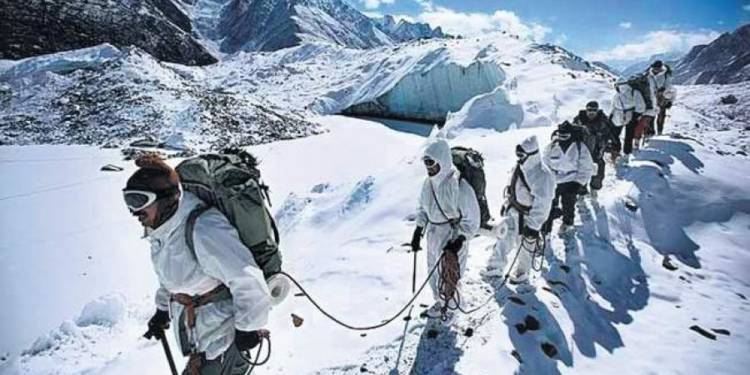The stories of Indian Army’s valour have reached far and wide in the last few decades. The defense strategists of neighboring countries like Pakistan and China, whose armed forces are constantly in tussle with the Indian Army, are also well-aware of its capabilities.
Amid the ongoing India-China border standoff, Indian Army has won praise from Huang Guozhi, senior editor of Modern Weaponry magazine, reported Hindustan Times. “At present, the world’s largest and experienced country with plateau and mountain troops is neither the US, Russia, nor any European powerhouse, but India,” Huang Guozhi, wrote in an article published by China’s thepaper.cn on Tuesday.
Guozhi highlighted the numerical strength of Indian mountain force in the article and wrote, “With more than 200,000 troops in 12 divisions, the Indian mountain force is the largest mountain fighting force in the world.”
Indian Army has expertise of operating on Siachen Glacier, known as the highest battlefield in the world. Guozhi also wrote about this in the article. “The Indian Army has set up hundreds of outposts in the Siachen Glacier area with an altitude of more than 5,000 metres, with 6,000 to 7,000 fighters stationed. The highest post has reached 6,749 metres.”
He also wrote about weaponry of the Indian armed forces, perhaps in order to warn the hawks in the People’s Liberation Army- armed forces of China, and highlighted, “The Indian military has also spent heavily on advanced heavy equipment from the US including the M777, the world’s lightest 155mm-towed howitzer, and the Chinook heavy transport helicopter that lifts the gun, to boost its fire support and anti-armour capabilities”.
Indian armed forces have centuries old experience of operating in mountains, as even in the times of British, Indian Army has fought on Tibetan plateau and tough Himalayan terrains.
On the other hand, Chinese armed forces have very little experience of fighting in tough mountains. Their limited experience of operating in mountains comes from Tibetan expedition, and Chinese army is primarily a force which can fight in plains.
In the last two standoffs against India in last three years, in Doklam and in Ladakh, China was forced to retreat. In the Ladakh standoff, China has retreated by two and half kilometers and Beijing has removed its commander involved in the whole escalation.
It is very much possible that the Chinese Commander has been removed because India matched up to Chinese build up and kept developing its infrastructure despite PLA’s attempts to block it.
Another reason why Xi Jinping replaced the ground forces Commander could be that he is simply scapegoating the PLA Commander. Beijing has been given a bloody nose and why would the Chinese side want to admit that it was the Chinese President who got their nose bloody? It is far more convenient to pin the blame on the Lt. General.
India is far more capable on the LAC than it was a decades ago, and in the event of a swift, limited theatre skirmish, eastern Ladakh could become another Nathu La for the PLA. Jinping doesn’t want this embarrassment especially when he has already become a subject of ridicule around the world.
Either way, it is Beijing which is on the back foot ahead of the crucial meetings. Going into the Corps Commander-level meeting between India and China, it is advantage New Delhi.































